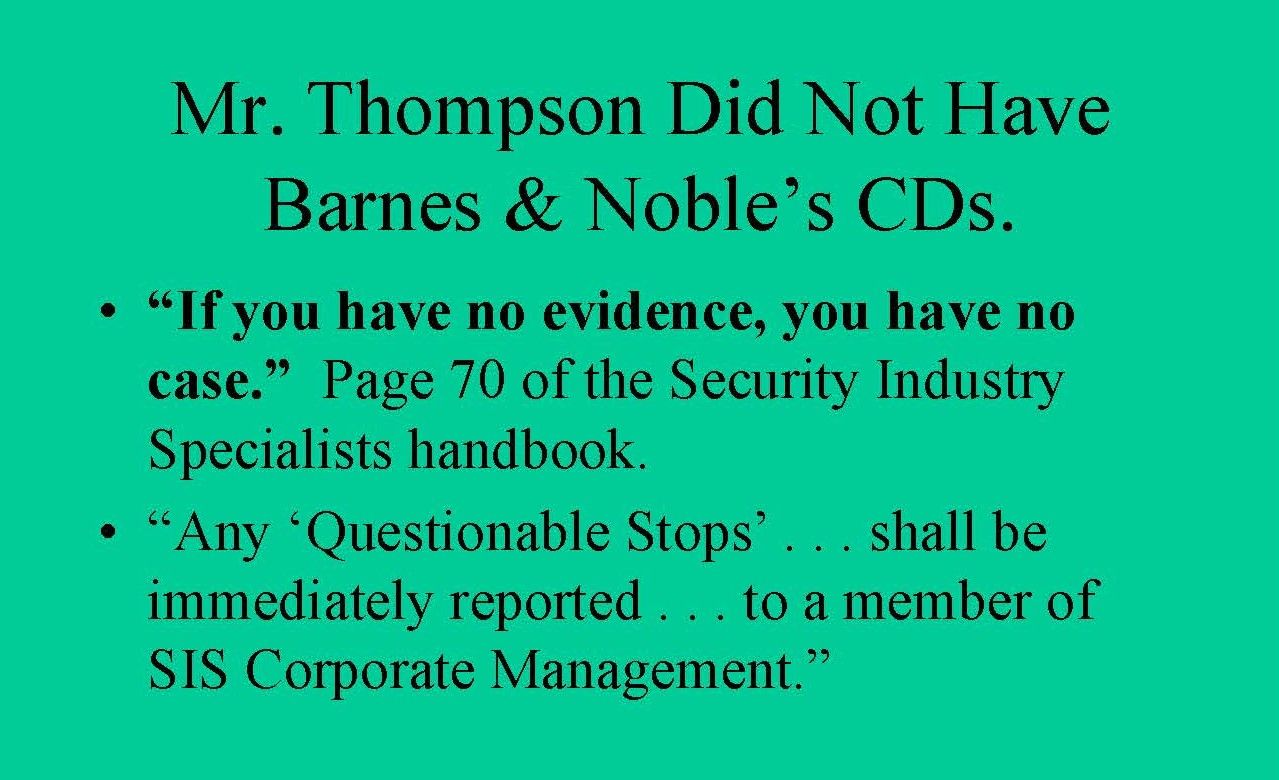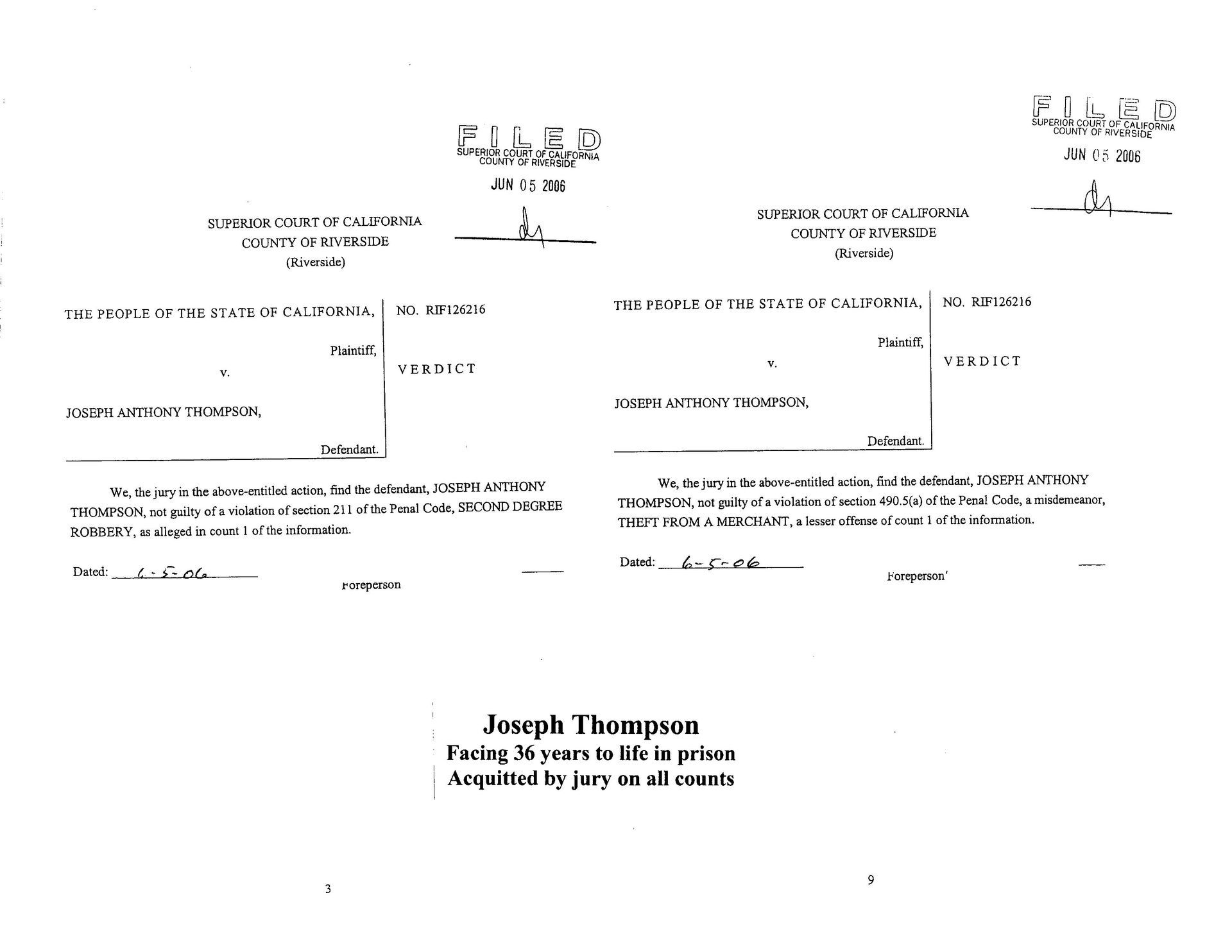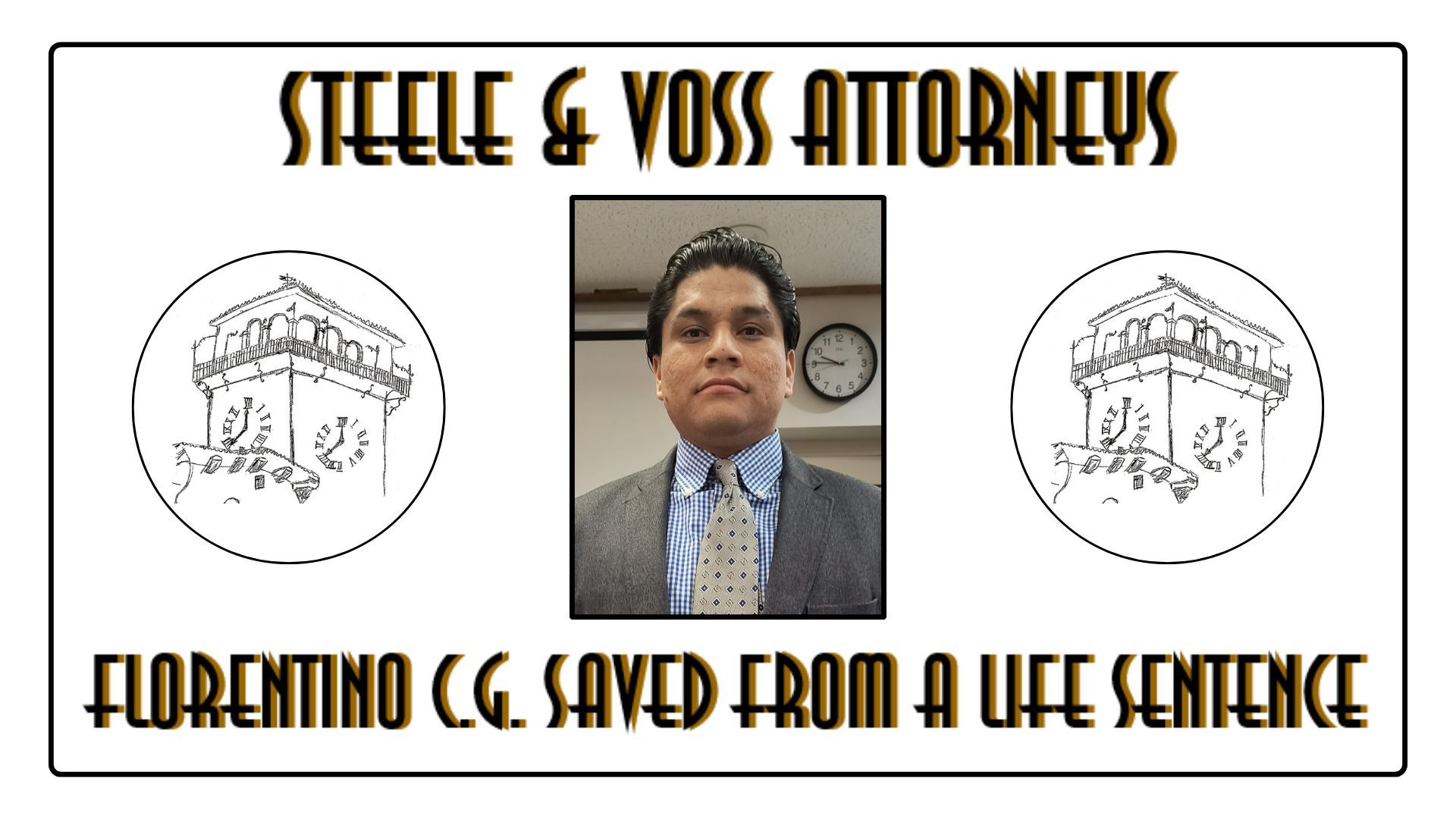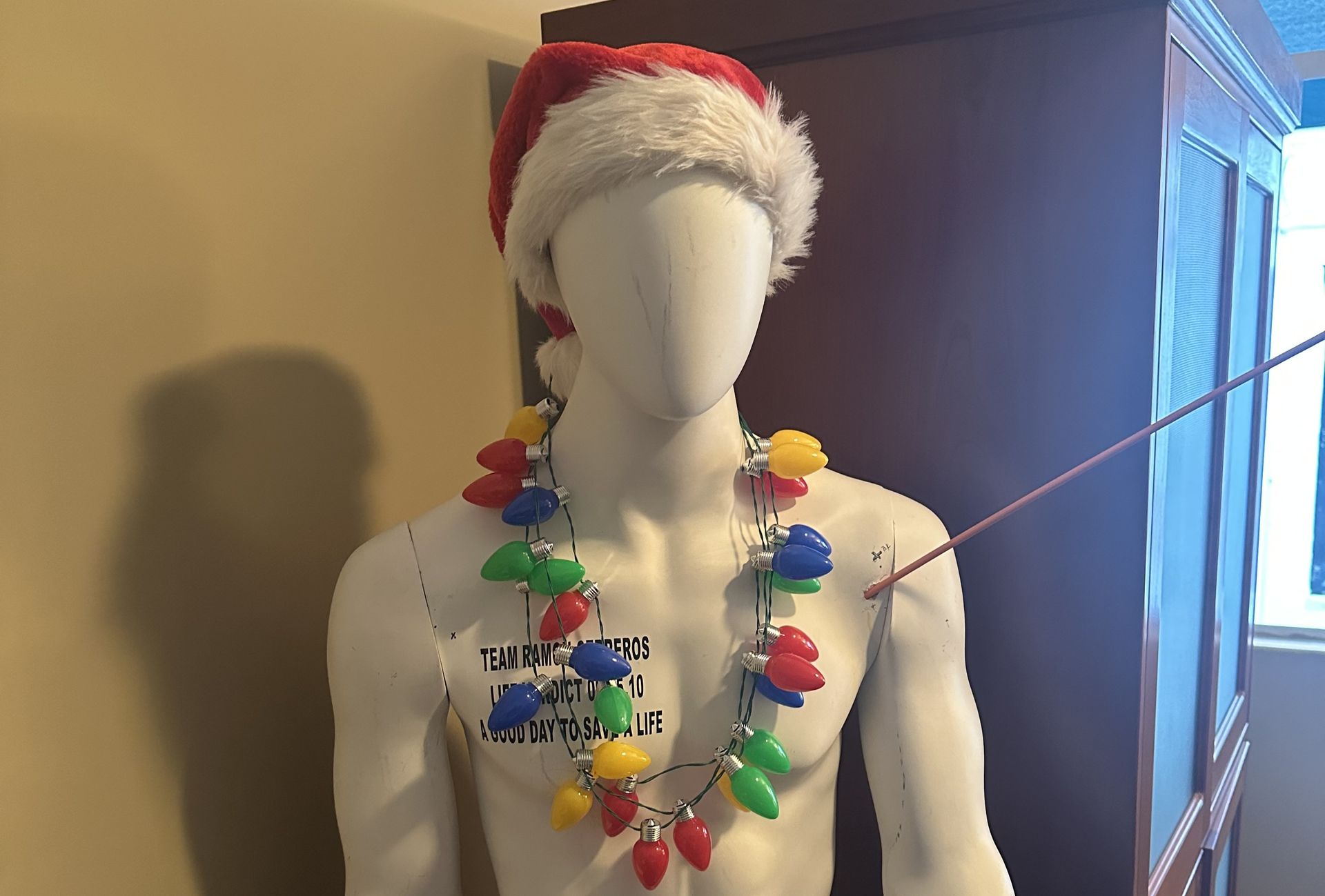Joseph T. RIF126216, on June 5, 2006 he was found NOT guilty on all Charges
This is a robbery trial that Addison won,
his client was charged with robbery with a strike prior,
had he been convicted he was looking at 16 years in prison,
instead he was released from jail and went home
- Charges: Robbery (Penal Code § 211) with a strike prior (Penal Code § 667(c)&(e)(2)(A)/1170.12(c)(2)), prison term prior (Penal Code § 667.5(b)), and serious crime prior (Penal Code § 667(a)).
- Exposure: Joe was looking at sixteen years in prison. His case actually started out as a thirty-six years to life-in-prison exposure case because he was charged with two additional out-of-state strikes and an additional five year serious prior offense (nickel prior). Addison challenged those strikes and one of five year serious priors before the trial began and got them dismissed.
- Outcome: Acquitted of all charges. Joe was immediately released from jail directly from the courtroom. Joe and Addison then went and had lunch, where he started a tradition of buying a carne asada burrito for the first meal back to freedom for his clients who have been released from jail after an acquittal.
This case was a challenge from the beginning. It started out as a 31 years to life in prison case. Joe had two out of state strike priors and one strike prior from California. Addison challenged the out of state priors and won, but that still left Joe's exposure at 16 years and his likely exposure if they lost the trial was 12 years. The district attorney was bitter about losing the opportunity to send Joe to prison for life, so there were no offers made and it was made clear that no offers from the defense would be accepted.
What made the numbers unacceptable was that the "robbery" was really an allegation of a glorified petty theft. It was Estes robbery, which means that it was a shoplifting with an allegation of force or fear against store worker. The allegation was that Joe went to a Barnes and Noble, went to the compact disks area, selected a couple of compact disks and tucked them into the back of his pants. The instore video did capture Joe in the store, but somehow missed him putting the compact disks in his pants. After looking through the compact disks and a checking out some books Joe left. He was followed out by the store's loss prevention person. The loss prevention guy stopped Joe and demanded that he lift his shirt to prove that he didn't have any compact disks tucked into the back of his pants. Joe, knowing that he hadn't taken anything, and feeling like he was being harassed because he was the only black person in the store, refused. The loss prevention guy claimed that Joe then said, "I've a piece," as if he was in an old gangster movie. Joe testified that he said, "You're a piece of shit, get away from me," and got in his car and left. The police pulled him over shortly thereafter and found compact disks in his car, just as everyone had compact disks in their cars back then, but none that were brand new or still in the store wrapping. The police of course also did not find a gun.
This district attorney was not deterred by the lack of evidence. She told the jury that the cameras weren't set up to capture every inch of the store, that the loss prevention should be believed because he didn't have any reason to lie, and that Joe must have ditched the compact disks' store wrapping somewhere along the way. The jury came back with NOT guilty verdicts for both the robbery charge and the lesser included offense.
One interesting thing that happened during the trial is that Addison got a court order to take photos inside of Barnes and Noble. They had a policy of not allowing anyone to take pictures in their store. Addison explained that it was a court order, not a request. They said that they would get their corporate counsel in New York on it. Addison explained to their lawyer in New York that it was a court order, not a request. He told his employees to not cooperate with the order. Addison called the New York lawyer and told him to look at map and find Corona, California. That's where the trial was. He explained that it's a two courtroom courthouse with a judge that he had been appearing in front of for years, and that if thought the judge would not issues warrants for the employees' arrests, he was wrong. He still told the employees to not cooperate with the court order. When the judge found out about that, he said that if the employees didn't comply with the court order within twenty-four hours he would in fact issue warrants for their arrests and send the courtroom deputy to pick them up, and not only that he would issue a warrant for the New York attorney's arrest and personally call the New York State Bar to let them know that an attorney had advised his clients to violate a court order. When the New York attorney heard that all of a sudden he decided it would be best to tell his workers to cooperate with the court order.
Another side note is that there was one juror that was holding out for a conviction. Criminal defense is one place where racial issues must be confronted. Pretending that race is not an issue when the accused person is black or brown is a mistake. Joe and Addison were very aware of the racial makeup of the venire, all the potential jurors, and the jury once it was selected. They were concerned that it was an all white jury except for one young black woman. There was concern that the one black juror would bond with the district attorney who was also a young black woman, but the thinking was that having at least one black juror was better than having an all white jury. It turned out that jury was the holdout wanting to convict. The jury foreman reported to the judge that there was one jury that was refusing to deliberate, she wouldn't discuss the evidence with the other jurors, she just stated that Joe was guilty and said that she would not talk about it. The judge then brought the juror out to ask if she was refusing to deliberate. She said that she had a relative that's a criminal, and that her relative was "just like" Joe, and that there was no need to talk to the other jurors because she knew the kind of person Joe was based on his similarity to her criminal relative. That was all kinds of reasons for her to be excused as a juror in the case. The alternate juror was called in and within minutes the jury returned with NOT guilty verdicts.
Another interesting side note was that Addison convinced the judge that Joe had to be released right there from the courtroom because the Court didn't have any jurisdiction to return him to the jail. That wasn't easy, the district attorney had a fit, it was going to be embarrassing to watch Joe walk out of the courtroom a free man after having tried so hard to have him sentenced to 31 years to life in prison. In the end the judge realized that he couldn't put Joe back into custody after he had been acquitted of all charges.
This is one of slide that Addison used in his closing argument

These are the verdict forms where Joe was found NOT guilty of the charge and the lesser included offense.


